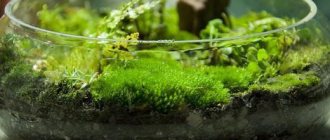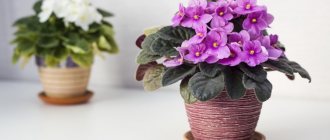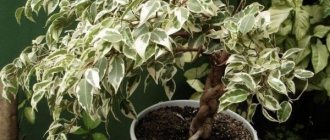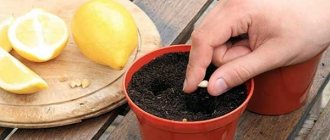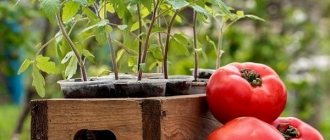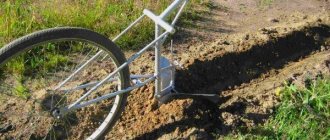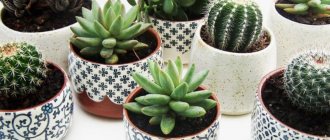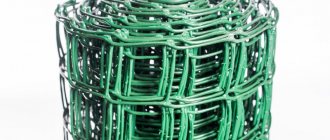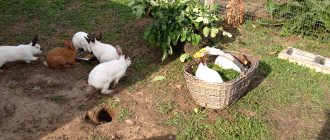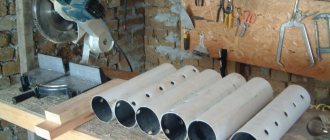What soil is suitable for succulents
To understand what kind of soil is needed for succulents, you should study the characteristics of these plants. They retain moisture well and require moderate watering at least once a week. But if there is too much water, the bushes may die. Therefore, the soil should be chosen poor, with a sufficient amount of inorganic elements. A prerequisite is the presence of good drainage.
The four main components of soil are air, water, minerals and organic matter. The optimal soil composition for normal plant growth has a composition by volume of 50% solid (45% mineral, 5% organic) and 50% porous space (25% filled with air and 25% filled with water).
Common soil composition for succulent crops
There is no one way to make the perfect potting mix. Experienced gardeners often recommend using soil based on garden soil, sand and moss, as well as regular soil and perlite (in a 1 to 1 ratio). Other gardeners try to avoid mixtures that contain peat.
How to Do a Soil Test for Succulents
You can try testing the soil to see if it is suitable for growing such crops or not. If, after water gets in, the earth crumbles and the liquid flows quickly, then this option is suitable for planting plants. If the soil remains compressed into a lump, it means that there are not enough inorganic components in it, you should add a little of them. Adding organic material is not necessary since in their natural habitat most succulents live in weathered soils with very little humus.
The optimal soil composition for planting succulents is slightly acidic, with a fairly large percentage of lime. If there is strong alkalinity, you will need to change the balance by adding 1 tbsp. l. vinegar diluted in 3.7 liters of water. The top layer is necessarily formed with gravel, which ensures the surface of the pot is dry. The soil for most types of succulents should have a crumbly structure.
Types and varieties of haworthia for growing at home
Helpful information:
- a perennial plant in nature lives up to 20 years - the succulent grows very slowly;
- “children” appear next to the parent base over many years, the area is covered with a dense carpet of original plants;
- Haworthia's homeland is South Africa;
- flowering begins on the summer solstice and lasts 4–5 weeks;
- what does haworthia look like? Photos help to understand why the plant is considered one of the most original types of indoor flowers;
- Most varieties are highly decorative. The fleshy leaves have tubercles, stripes, “windows”, areas for catching light, “cilia”, outgrowths from the edges, dots and specks, bizarre patterns;
- the shade of the leaf blades varies: light and dark green, bluish;
- The shape of the leaves is varied: long, narrow, wide, boat-shaped, blunt at the ends.
The original succulent has many varieties. Not all varieties can be grown at home: some species require specific conditions that are exactly close to natural.
Many varieties and types of highly decorative haworthia have taken root well in the apartment:
- Grater-shaped. The leaf blades are pointed, not wide, with multiple growths.
- Concolor. There are thin, “graceful” lines on the surface.
- Scaphoid. Bright green fleshy leaves, tubercles are practically absent, translucent elements on the surface are visible. Spectacular flowering - white buds on a long base.
- Retuza. Interesting shape of triangular leaves: it seems that the tops are neatly shortened. In a dark room, with a prolonged lack of light, the color of the leaves changes: dark green turns into reddish.
- Pulled away. Vertically growing leaves are covered with dark dots.
- Fasciata. Multiple white stripes against the background of rich green leaf plates give the plant an original look. Concolor and Big Ben are popular varieties of striped haworthia.
- Pearl. The white tubercles along the edges of the leaves give the plant an unusual appearance. The spike at the top is another characteristic feature of the pearl variety. the shade of the petals is light green, the inflorescences look like brushes.
- Maugani. A popular species has vertical leaves and a cylindrical shape. Transparent elements on the edge of each leaf plate help the sun penetrate into the pulp to activate the process of photosynthesis. On hot days, when there is a lack of moisture, the plant goes deeper and sinks into the soil to survive.
- Cooper. The beautiful succulent is a round rosette, fleshy leaves of a greenish-gray hue with outgrowths on the edges resembling long eyelashes.
Composition of gravel-based soil for succulents
To prepare such a complex, you will need gravel (the smallest fraction is 3-5 mm). Small pots are used for planting crops. If the volume of the container is larger, this composition will retain quite a lot of moisture and will not be able to dry out as needed for the comfortable growth of the plant.
Gravel is often used in various potting mixes for succulent crops such as Haworthia.
If the pot has larger parameters, it is better to use gravel of 5-10 mm fraction. You can plant larger succulents in it. This type of mixture is also suitable for small containers, but in this case the crops will take longer to take root.
Sea pebbles or gravel with a fraction of 1 to 3 cm are used for drainage or for planting large trees. It is not used in its pure form; it is better to add a complex of components together with a small pebble. For planting succulent crops, ordinary relict pebbles, which are sold in hardware stores, are suitable.
If you want to grow caudexes, you must add regular river sand and peat to the gravel. This promotes good moisture retention by the rhizomes. The selection depends on the growing conditions and room temperature. Those that grow quickly (for example, Echeveria) are a mixture of peat and gravel.
The main advantage of gravel is that if you flood your crop, the water will not stagnate, and algae will not grow on it. Gravel of different fractions is also used as mulch, thereby decorating the plant and emphasizing the conditions for the existence of succulents in natural conditions.
Care
The money tree is not considered a demanding and capricious plant. It is easy to care for, so it is often chosen for growing by novice gardeners. But this plant also needs to create certain conditions:
- Crassula loves a lot of light, but it is better to protect it from direct sunlight.
- For a proportional and uniform crown, the plant is periodically turned in the light.
- During the growing season, the room temperature should be from +20 to +25 degrees Celsius. During the rest period, it is advisable to reduce it to +14 degrees.
- If there are no conditions to ensure winter dormancy, the container with the tree is moved away from heat sources and the frequency of watering is reduced.
- The plant should be watered sparingly, as excess moisture causes its roots to rot. Lack of water leads to leaf lethargy, yellowing and falling. Therefore, the plant must be watered as the lump of earth in the pot dries out.
- Fertilizer for succulents is used for feeding. In summer it is applied 2 times a month. In winter, fertilizing is not required.
- The plant loves fresh air, but does not tolerate drafts and temperature changes.
- When the crown is larger than the diameter of the pot, you need to prepare the tree for replanting.
- The pot must contain drainage and holes.
- For 1 week after transplantation, it is better not to water the fat plant, but only spray it generously.
- A money tree purchased in a store can be replanted 7-14 days after purchase. This time is required for the plant to get used to new conditions.
We talked about how choosing suitable soil for a money tree is a mandatory procedure. Only if this condition is met will the plant develop correctly, delighting its owners with rich green leaves.
Peat soil for succulents: proportions and creation
Peat is a substance that is used for very large succulents. For example, such as Agave. They grow quickly, develop, and consume a lot of water and nutrients. Peat substrate is also suitable for small seedlings that grow quickly - Echeveria, Sedum, Crassula, Euphorbia. It is believed that the survival rate of these representatives in gravel is better than in peat, but they take longer to develop and need to grow a huge number of roots.
A peat-based soil mixture is the best option for young succulents.
Preparation of optimal peat soil:
- We take a high-quality peat substrate (for example, German universal soil, perlite has already been added to it), it is quite homogeneous. Remember that the cheaper the substrate, the more weeds, various sticks and debris it contains. It is better to buy substrates from well-known manufacturers.
- We loosen the prepared ingredients by hand. If the soil mixture does not contain perlite, add a little, as well as small expanded clay (or dry backfill). There are no clear proportions; it is recommended to look at the ratio visually.
- Next, add a little zeolite (it has antifungal properties). As an additional component, you can add some lava pumice.
- Mix the ingredients until smooth.
To check whether the substrate has been created correctly, you need to take the prepared soil and squeeze it into a ball. If it crumbles, it means everything was done correctly; if the lump remains solid, you need to redo the mixture again. An important point is to prepare the drainage. It is relevant for tall pots; the ideal option would be to use expanded clay.
Step by Step Actions
Having prepared everything you need, you can begin transplanting.
- First, you need to remove the flower from the old pot. To do this, you can lightly tap on the bottom and walls. If this doesn't work, try making gaps around the perimeter of the pot.
- When you remove a succulent, you must inspect the condition of the roots. And to do this, you need to destroy the earthen lump - completely (for a young plant) or partially (if the plant is already an adult). It is better to remove soil in a dry state. If damage is found, they need to be cut off and the remaining roots washed with potassium permanganate. Be sure to dry the wet roots and only then proceed with further actions.
- Place pebbles and a couple of centimeters of soil at the bottom of the pot. We try on the plant so that the line where the root growth ends is a centimeter below the edge of the pot.
- Then we begin to slowly add soil, trying to add it evenly on all sides. The pot must be shaken slightly so that the internal contents are distributed more evenly. If there is only one plant, we place it in the center. If there are several of them, it is better to separate the roots with plastic partitions. Before planning a group planting, be sure to check their compatibility information.
coconut shell
Another option for soil suitable for succulents is coconut husk. It comes in several types, depending on the factions. It is sold in special briquettes, which are then soaked in water, and the result is a finished organic substance - finely ground coconut shells. It is very moisture-intensive and contains quite a lot of salt. Additionally, it must be combined with sand, gravel, vermiculite, and expanded clay. When using coconut husks in their pure form, the crops will develop poorly and take a long time.
What are the disadvantages of coconut shells?
On forums dedicated to the cultivation of succulent plants, flower growers have an ambiguous attitude towards coconut shells. You can often find complaints about the quality of coconut shavings (fungal cultures often develop in soil containing coconut, suppressing the development of succulents). The soil mixture on coconut shells in a pot sags over time, and the development of plants slows down (especially the root system) if you compare them with plantings planted in a clay substrate.
In this video, a famous succulent collector shares his experience of working with coconut substrate.
Whether to use this type of substrate or not is a controversial decision.
Ready-made soil for succulents: a review of popular soil mixtures
There are quite a large number of ready-made substrates on the market in which such drought-resistant plants can be planted. We suggest considering the most popular ones in order to choose the best mixture option.
Akadama soil mixture
This is ordinary semi-fired clay of various rocks, which is presented in the form of granules of heterogeneous fractions.
Photo of Akadama clay substrate of different fractions.
The larger the plant is planned to be grown, the larger the fraction used. Advantages of Akadama:
- porosity;
- absorption of moisture, its uniform release;
- a lighter composition for growing (relevant for those who have to move different boxes and containers from one part of the greenhouse to another).
In the greenhouse, over the course of a year, Akadama breaks down, roots grow, and it turns into fine dust on which moss can grow. Therefore, it needs to be changed once a year.
"Ceramis"
Reddish granules of fired fireclay clay. Visually they look like broken brick or expanded clay. The mixture is also suitable for other plants (not just cacti or succulents) - it is light, porous, and moisture-absorbing. A more durable option compared to Akadama.
Haworthia in the house: signs and superstitions
Some amateur flower growers carefully study information about the effect of indoor plants on the health and emotional state of household members. Some people believe in omens, others consider them a relic of the past.
There is a belief that the flower grows slowly for a reason: the succulent with fleshy leaves takes away bad energy from the house and protects adults and children. With haworthia in the home, the emotional microclimate becomes more pleasant. For this reason, it is useful to place a flowerpot with Zebra cactus in places where the family often gathers.
Growing haworthia is not difficult: the flower will delight even those people who often go on business trips or do not have enough knowledge and experience in caring for capricious species: Azalea, Orchid, Indoor Rose.
Original succulent native to southern Africa - an ideal plant for growing indoors. The main thing is that there is enough warmth, light, and no drafts or dampness.
More useful information about the intricacies of caring for haworthia can be found after watching the video:

